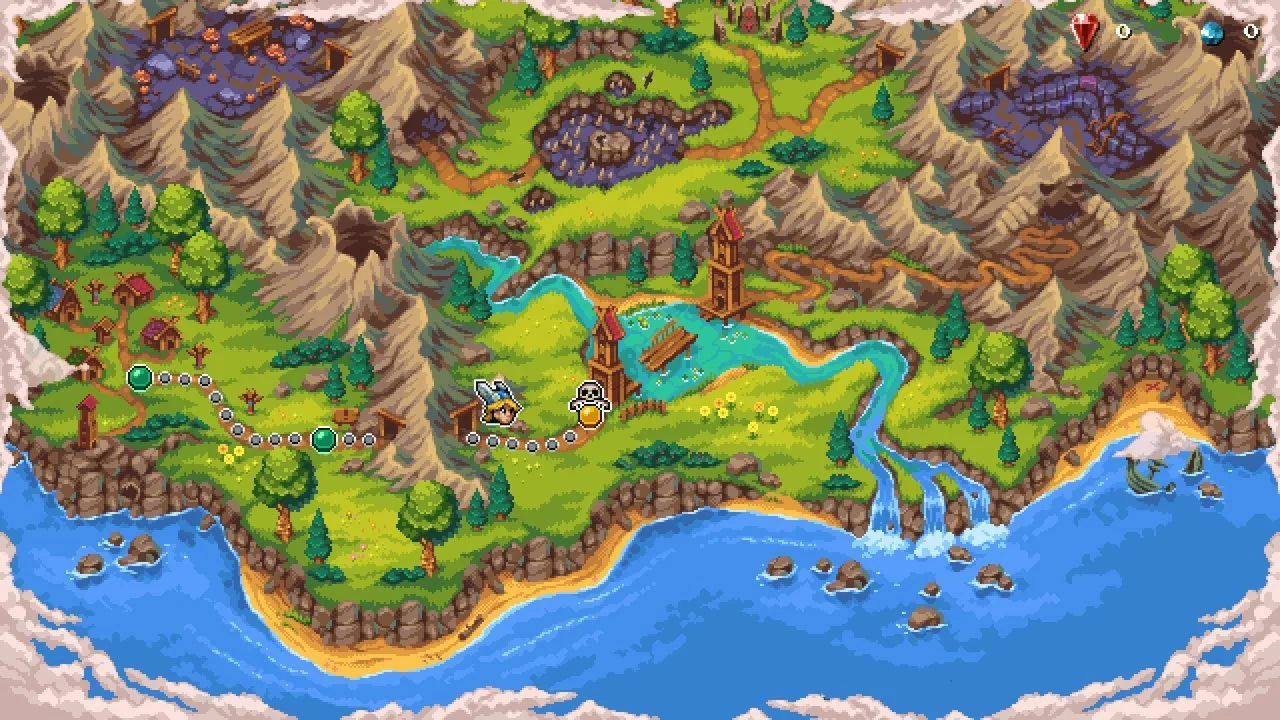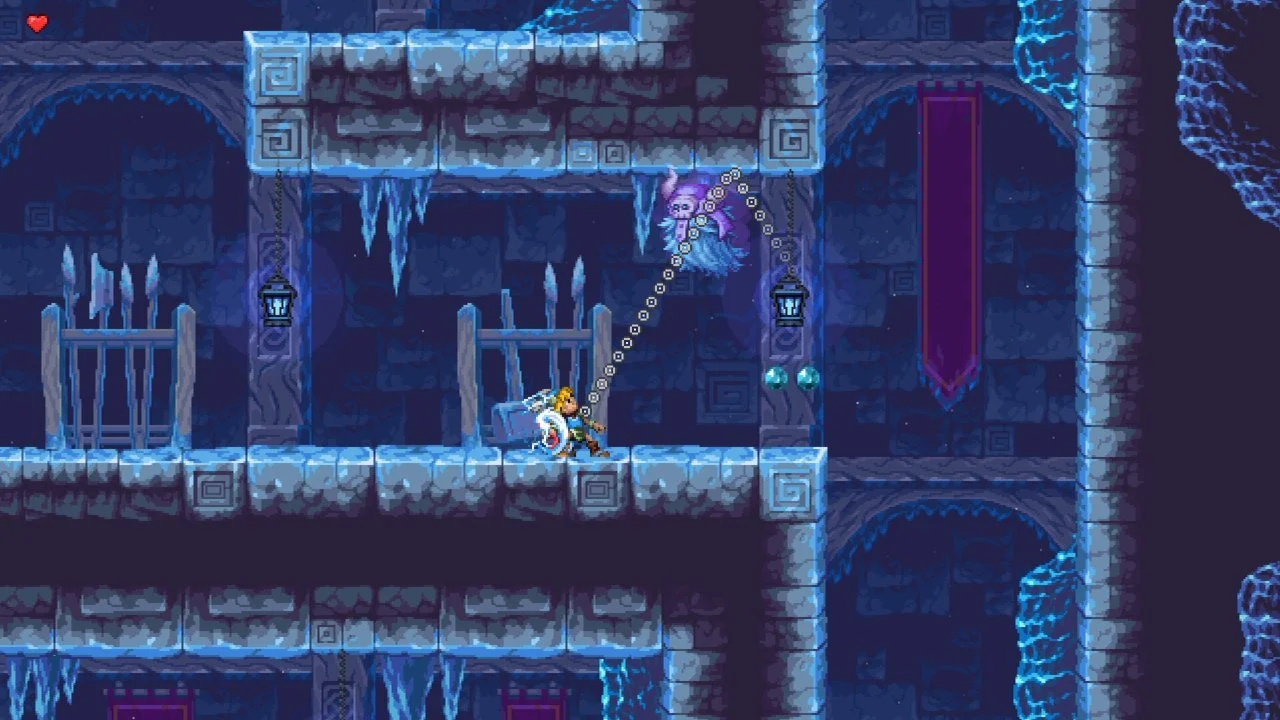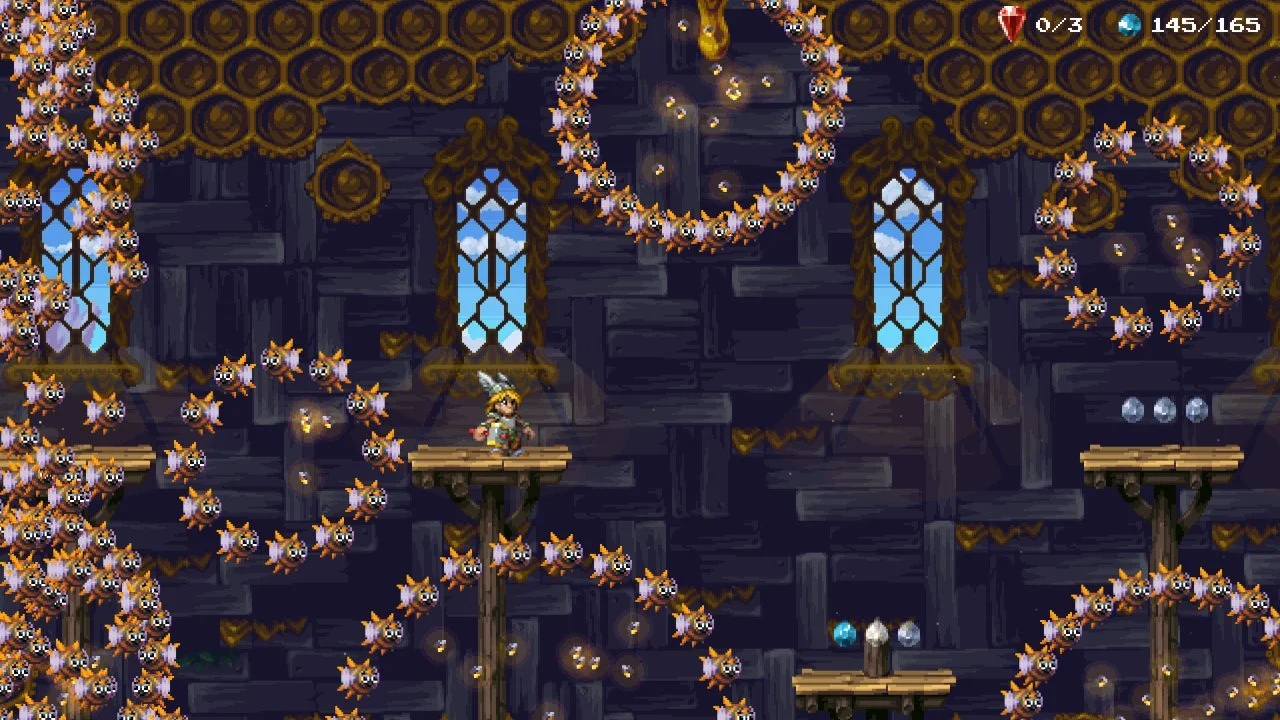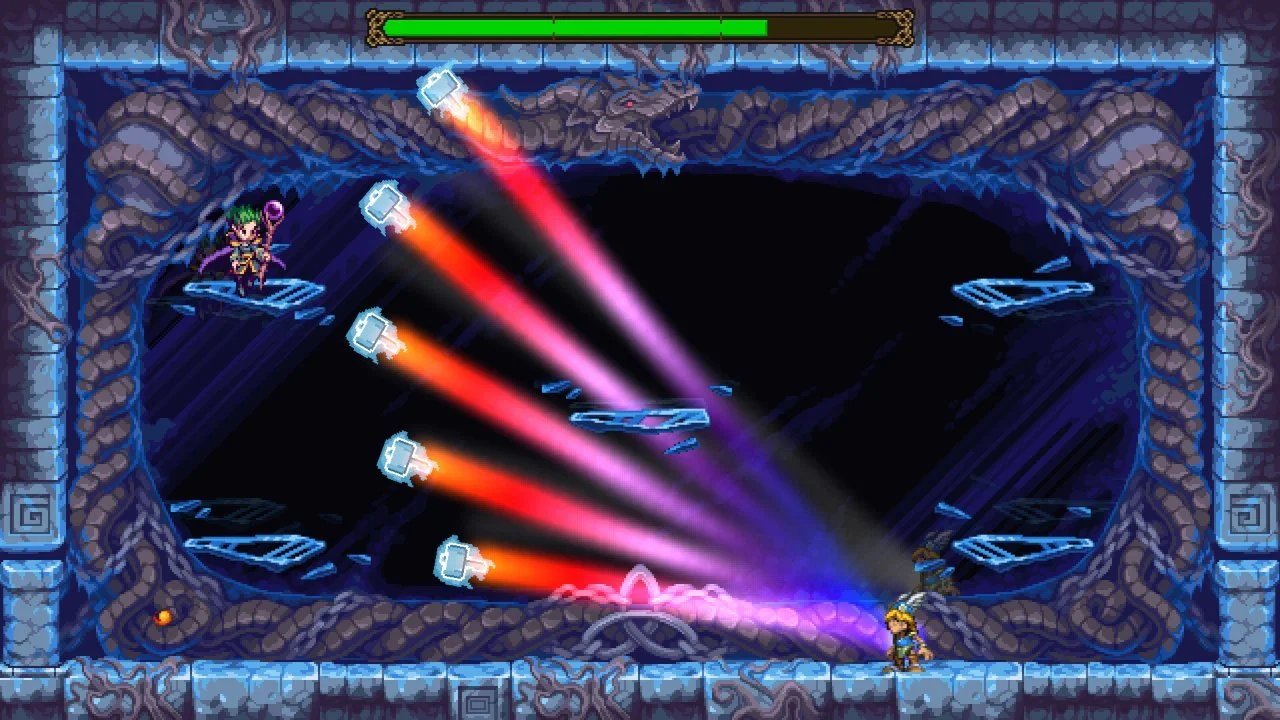PC Review Code Provided by Gameforge
Growing up on the older consoles, I have played my fair share of platformer games. The challenge level of those classic platformer titles would gradually increase to a point that it sometimes felt nearly impossible to pull off the necessary tricks to move forward through the game. It seems the folks over at Asylum Square and Gameforge grew up on these kinds of games as well seeing how they released Tiny Thor with levels full of gameplay similar to the kind of wild styles I haven’t seen since the Sega Genesis was a core console.
Story
It’s Thor’s birthday and he has to get back to Asgard for his birthday! Following what he thought was a guide back home, he found himself tricked by his brother Loki and has now destroyed the connector that holds the bridge to Asgard to Earth. But don’t worry, hope isn’t lost! You can find the runes you knocked out and put them back - and if you’re fast enough, you’ll still make it to your birthday party!
Gameplay
The first few levels of the game are pretty simple, as are the controls. You aren’t able to do much more than run, jump, and throw your hammer. This is where you can get your first encounters handled and get through a few levels, giving you a sense of what everything should look and feel like. You will learn that you can jump on some enemies and not on others, you can use mushrooms to bounce, you can move boxes, your hammer is a tool and a weapon, and how good your jumping skills are.
As you progress through the game, each defeated boss will unlock a new skill you can use in the game. These are controls like double-jump and wall jump. Each time you get a new skill, it will be applied moving forward, so get ready to use everything you have at your disposal in the next level!
The map for the game is laid out in a nostalgically noticeable style that anybody who played games like Donkey Kong Country on the SNES would recognize. You have a dotted pathway that juts out from completed levels and every time it stops at a node, that is a new level. A yellow node means you haven’t completed that level yet, green means the level is complete, gray means it is an intersection node to let you choose a direction to proceed, and green with a star on it means it is a shop you visited. There are little icons that show up on the map to indicate what they are, such as a special design for the boss level node and an altar standing behind a locked path for challenge levels.
Every level is full of blue gems, which are used at the shop to upgrade and power up your skills - or possibly change your color scheme. There are also hidden red gems in each level, typically three each time. The red gems are what you need to collect in order to gain access to the challenge levels. You don’t have to give up the red gems you collected when unlocking a path, but you do have to have enough to get through a locked path. A good thing that helps is that you can purchase the price of gems needed per path to be lowered by two in each shop.
Your hammer has a lot of cool uses as well. When you throw the hammer, it will bounce back and forth on the edges of the screen. If there is a wall, it will bounce off of that instead, but it will never leave the actual screen where you can see it. You can call the hammer back to you at any time, but it does no damage to enemies when returning. What is really helpful is that you don’t have to just throw it in a straight direction. The hammer can be aimed to be thrown in any direction as needed to hit the latch, enemy, or whatever else you are aiming at.
Focusing on the platforming aspect of the game, they really dig into making you get skilled with the different platforming skills. Once they start including the slide jump to wall jump to double-jump to wall jump type of combo just to get to the next area, you’ll start seeing what I mean. They also slowly include other elements of the game, like using the Slam skill on red mushrooms to make a dash-type attack which is also used to get through tight corridors.
Health is something to understand seeing how limited you are there as well. Instead of how most games do it where you have a certain number of hearts to represent how many hits you can take, you simply die on the first bit of damage if you didn’t collect the heart. If you have found a heart, it will have a timer on it. A starting heart will have six seconds on it and if you take damage then the heart jumps out and bounces around, giving you six seconds to collect it. This heart can be juggled as long as you have enough time to lose it and grab it again before you take the death blow damage. If you find another heart while you have a heart, it will simply add time to the existing heart.
Audio and Visual
Just as you’d expect from a game back in the day, this game is full of upbeat and energetic music. The boss fights bring about their own tunes as well, which is always an interesting touch that you love to see. Mixing these awesome music tracks for an action-heavy platformer game with hyper-pixelated graphics and almost low-tier sound effects really brings nostalgic energy to this new game. I love the style they chose to go with this game and it is incredibly fitting to the overall gameplay and atmosphere this game delivers!
Replayability
Completionists out there will definitely find that this game has some replayability as there are hidden gems in each level, a ton of blue gems to collect, various things in each shop to purchase, and challenge levels locked behind gem-collection numbers. The game itself may not have natural replayability, as once you beat the game your choice is to unlock more of the hidden levels or replay the levels you just completed. There is a time that goes up at the end of each level, which will be a golden aspect for potential speedrunners.
What Could It Have Done Better
As much as I love games in these styles, I still would have liked to see the difficulty of levels to have progressed a bit more gradually. The change from when the levels were a journey to when they became an entertaining struggle felt pretty fast and I can see some people getting aggravated really early on. My best example of this is in the Bee chapter where you have a full section of the level requiring you to move through a series of bees that you have to jump on in order to get progress in the level. Before this, there were virtually NO sections of the game suggesting that I jump on an enemy to proceed, and then suddenly it was a full swarm jump fest. Luckily, I had that old-school platformer mentality and it just kind of clicked what to do, but I’m sure somewhere out there a player is just throwing their hammer and confused why they just keep coming.
Verdict
Tiny Thor is a blast from the past wrapped up in a new experience with its nostalgic-like gameplay! If you were a fan of the older, classic platformers from the days of SNES and Sega Genesis, then this is an easy recommendation for you to check out. For the younger gamers, this is a platformer that will challenge your skills and entertain you at the same time. There is a lot to love in this little 16-bit-styled game!
Tiny Thor is available now on PC via Steam, GOG, and Epic Games Store. It is planned to come to Nintendo Switch later this Summer.
























